How are triplets formed
Twins, Triplets, Complications & Symptoms
What is a multiple pregnancy?
A multiple pregnancy is a pregnancy where you’re carrying more than one baby at a time. If you’re carrying two babies, they are called twins. Three babies that are carried during one pregnancy are called triplets. You can also carry more than three babies at one time (high-order multiples). There are typically more risks linked to a multiple pregnancy than a singleton (carrying only one baby) pregnancy.
How do multiple pregnancies happen?
There are two main ways that a multiple pregnancy can happen:
- One fertilized egg (ovum) splits before it implants in the uterine lining.
- Two or more separate eggs are fertilized by different sperm at the same time.
These two different types of multiple pregnancy result in either identical or fraternal siblings. The difference between identical and fraternal babies goes back to how the multiple pregnancy happens.
Identical twins or triplets happen when a single egg is fertilized and then later splits. These newly divided embryos are identical. Children that are identical multiples will look like each other and be the same sex.
Fraternal multiples develop from separate eggs that are fertilized by a different sperm. Because these are different eggs and different sperm, the genetic material is varied. These children won’t look identical and can be different sexes from each other.
In a pregnancy with triplets or more, your babies could be all identical, all fraternal or a mixture of both. This can happen if your body releases multiple eggs and more than one is fertilized. In a case where you have both identical and fraternal multiples, more than one egg was fertilized and then at least one of those eggs also split after fertilization.
Are identical twins or triplets always the same sex?
Because identical twins or triplets share genetic material, they are always the same sex. The sex of a baby is determined by the particular sperm cell that fertilizes the egg at conception.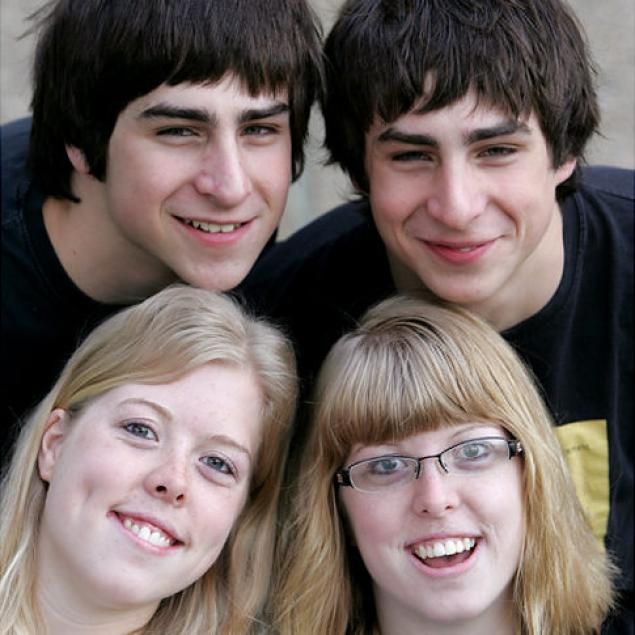 There are two kinds of sperm cells — those carrying an X chromosome or Y chromosome. The mother’s egg carries an X chromosome. If a sperm cell carrying an X chromosome fertilizes the egg, it will make a XX combination (female). If the sperm cell is carrying a Y chromosome, you end up with an XY pairing (male).
There are two kinds of sperm cells — those carrying an X chromosome or Y chromosome. The mother’s egg carries an X chromosome. If a sperm cell carrying an X chromosome fertilizes the egg, it will make a XX combination (female). If the sperm cell is carrying a Y chromosome, you end up with an XY pairing (male).
Identical multiples start as one egg and then split, so whatever chromosome combination is present at fertilization is the sex of all multiples.
What increases the chance of a multiple pregnancy?
There are several factors that can increase the risk of a multiple birth. You might be at a higher risk of getting pregnant with more than one baby at a time if you:
- Are older (women in their 30s are at a higher risk of multiples because the body starts to release multiple eggs at one time when you get older).
- Are a twin yourself or have twins in your family.
- Are using fertility drugs.
You might also be at a higher risk of a multiple pregnancy if you are taller than average or have a higher body weight.
Another risk factor for a multiple pregnancy is genetic. There is an increased possibility of a multiple pregnancy if you are a multiple yourself, or if multiples run in your family. This heredity trait is generally passed down through the maternal (mother’s) side of the family.
The use of fertility drugs can be another reason you might have a multiple birth. Treatments for infertility can increase your risk of a multiple pregnancy because procedures, like in vitro fertilization (IVF), often involve transferring more than one fertilized egg into your womb. Your provider usually transfers more than one egg at a time to increase the odds of a successful pregnancy.
How common are multiple births?
Multiple births have become more common in recent years because more people are using fertility drugs and procedures, such as IVF, to help conceive a baby.
What are the signs of a multiple pregnancy?
The only way to know if you’re pregnant with more than one baby during your pregnancy is through an ultrasound exam with your healthcare provider.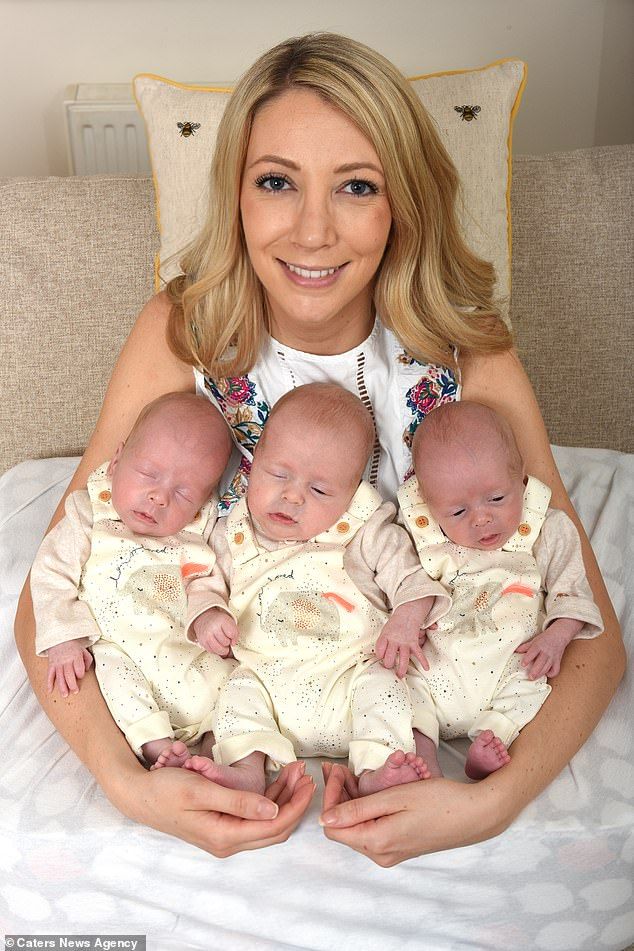 During this test, your provider can look at images of the inside of your uterus and confirm how many babies are in there.
During this test, your provider can look at images of the inside of your uterus and confirm how many babies are in there.
You might experience more intense symptoms during a multiple pregnancy than with a single pregnancy. These can include:
- Severe nausea and vomiting (morning sickness).
- Rapid weight gain in the first trimester of pregnancy.
- Sore or very tender breasts.
- High human chorionic gonadotrophin (hCG) levels — this hormone is made during pregnancy and is what a pregnancy test picks up.
- High amounts of the protein alpha-fetoprotein in your blood.
Apart from an ultrasound, your provider might suspect multiples if there’s more than one heartbeat detected during a fetal Doppler scan.
What complications are linked to multiple births?
Anyone can experience complications during pregnancy — regardless of how many babies you’re carrying. However, most healthcare providers consider multiple pregnancies higher risk than single pregnancies. This doesn’t mean that every woman who carries more than one baby during a pregnancy is going to have problems. If you’re pregnant with multiples, your provider will want to watch you for possible complications that can happen when you carry more than one baby at once. Your provider will talk to you about each risk factor and frequently check with you to make sure you aren’t experiencing anything concerning.
This doesn’t mean that every woman who carries more than one baby during a pregnancy is going to have problems. If you’re pregnant with multiples, your provider will want to watch you for possible complications that can happen when you carry more than one baby at once. Your provider will talk to you about each risk factor and frequently check with you to make sure you aren’t experiencing anything concerning.
Possible complications include:
- Premature labor and birth: The most common complication of multiple births is premature labor. If you’re pregnant for multiples, you are more likely to go into premature labor (before 37 weeks) than a woman carrying only one baby. The goal for many moms of multiples is to complete 37 weeks. This is considered term in a twin pregnancy and reaching this week of gestation increases the chance the babies will be born healthy and at a good weight. Babies that are born prematurely are at risk of another complication of multiple births — low birth weight.

- Preeclampsia or gestational hypertension (high blood pressure): High blood pressure is called hypertension. During pregnancy, your healthcare provider will watch your blood pressure carefully to make sure you don’t develop gestational hypertension (high blood pressure during pregnancy). This can lead to a dangerous condition called preeclampsia. Complications related to high blood pressure happen at twice the rate in women carrying multiples compared to women pregnant with only one baby. This complication also tends to happen earlier in pregnancy and be more severe in multiple pregnancies than single pregnancies.
- Gestational diabetes: You can develop diabetes during pregnancy. This happens because of the increased amount of hormones from the placenta. The size of the placenta can also be a factor in this condition. If you have two placentas, there’s an increased resistance to insulin.
- Placenta abruption: This condition happens when the placenta detaches (separates) from the wall of your uterus before delivery.
 This is an emergency situation. Placenta abruption is more common in women who are carrying multiples.
This is an emergency situation. Placenta abruption is more common in women who are carrying multiples. - Fetal growth restriction: This condition can also be called intrauterine growth restriction (IUGR) or small for gestational age (SGA). This condition happens when one or more of your babies is not growing at the proper rate. This condition might cause the babies to be born prematurely or at a low birth-weight. Nearly half of pregnancies with more than one baby have this problem.
Fraternal twins always have two placentas. The risks of pregnancies with fraternal twins are similar to those of pregnancies with only one baby. However, the number of possible risks are increased when compared to pregnancies with one baby.
Identical twins may have one placenta (70% of the cases) or two placentas (30% of the cases). The risks of identical twins with two placentas are similar to those listed above for fraternal twins. Identical twins with one placenta (called monochorionic) have risks that are unique to them. In 5 to 15% of the cases, they may develop a condition called twin-twin-transfusion-syndrome (TTTS). This is the consequence of vascular communications at the placenta level between the twins. Due to these communications, the twins may share their blood. When this happens — if nothing is done — there is a 90% risk that the twins will die in-utero. In-utero procedures are performed to decrease the fetal death risk for the twins.
In 5 to 15% of the cases, they may develop a condition called twin-twin-transfusion-syndrome (TTTS). This is the consequence of vascular communications at the placenta level between the twins. Due to these communications, the twins may share their blood. When this happens — if nothing is done — there is a 90% risk that the twins will die in-utero. In-utero procedures are performed to decrease the fetal death risk for the twins.
Another complication that can happen in identical twins with one placenta is called twin-anemia-polycythemia sequence (TAPS). This is due to blood that goes from one twin to the co-twin because of vascular communications at the placental level. In this condition, one twin becomes anemic (low red-blood cells), whereas the co-twin becomes polycythemic (too many red-blood cells). Several treatments/interventions are performed when this happens.
A third condition that can occur in identical twins with one placenta is called” selective IUGR”. One twin grows well, whereas the co-twin does not experience much growth.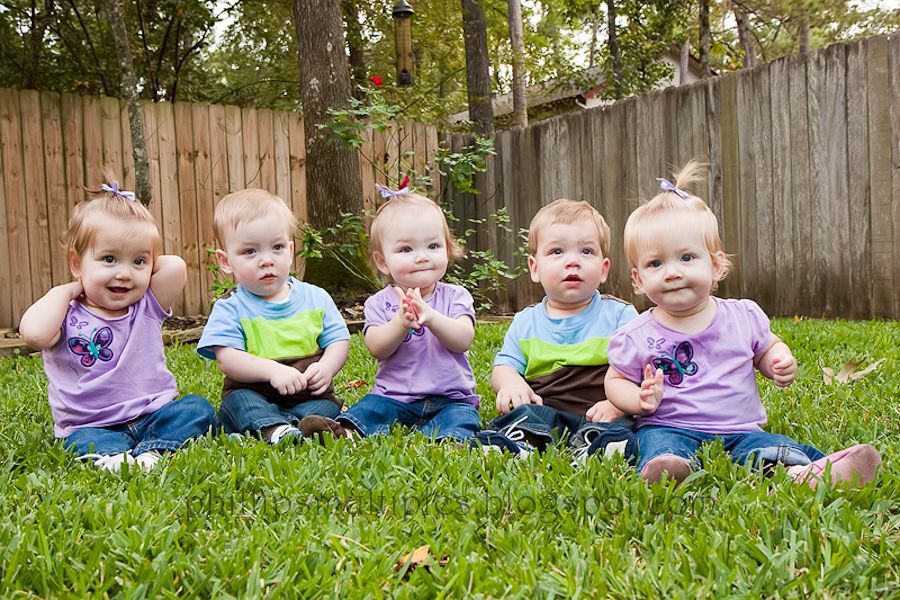
Another condition typical of identical twins is called twin-reversed-arterial-perfusion syndrome. In this condition, the heart of one twin pumps blood for the circulation of both twins. One twin does not have the heart and will not survive following birth. The outcome of the twin with the normal heart varies. Fortunately, this syndrome is rare (1 in 20,000 to 40,000) and it is amenable to in-utero procedures.
Identical twins with one placenta may also be in the same sac. They are called monochorionic (one placenta)-monoamniotic (one gestational sac). This pregnancy occurs in 1% of multiple gestations and it’s associated with an increased risk for one or both twins.
Your healthcare provider will diagnose the above conditions with an ultrasound.
Am I more likely to have a C-section delivery if I’m carrying multiples?
A cesarean section is a procedure used to deliver a baby through an incision (cut) in the abdomen. This type of delivery might be used for a variety of reasons, but it’s fairly common in multiple births.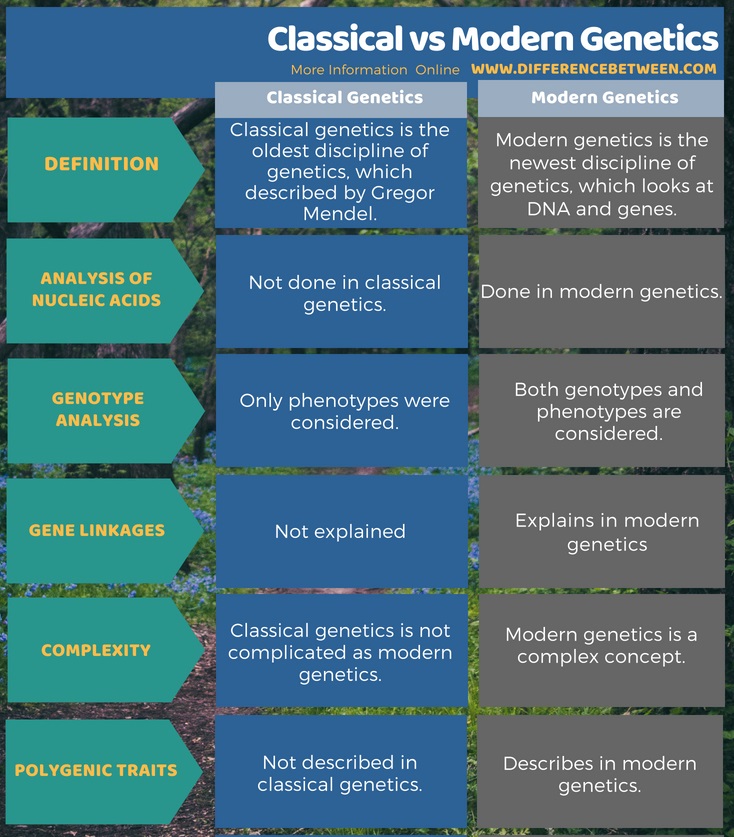 Your chance of having a C-section for a multiple birth is higher than if you were pregnant for only one baby. However, even in single births, a C-section can sometimes be the safest option for delivery.
Your chance of having a C-section for a multiple birth is higher than if you were pregnant for only one baby. However, even in single births, a C-section can sometimes be the safest option for delivery.
Often, the babies aren’t in the right position for birth — head down. A C-section can also happen if you have a complication during pregnancy that means a vaginal birth isn’t the safest option for you or your babies. Your healthcare provider will monitor you leading up to your due date and talk to you about the best option for delivery.
What can I do to stay healthy during a multiple pregnancy?
Eating nutritious foods, getting enough rest, and visiting the doctor regularly are important steps for any pregnant woman to take toward a healthy pregnancy. These steps are especially important during multiple pregnancies.
If you’re expecting multiples, you have additional dietary needs to meet. Getting enough protein and enough hydration (fluids) is important. You’ll also need to make sure you get enough extra calories for the developing fetuses. One rule of thumb is to eat an extra 300 calories a day per baby. That means that if you’re pregnant with twins, you will need to add 600 calories to your daily diet. Talk to your healthcare provider about your diet and the specific amounts you’ll need for a healthy pregnancy.
One rule of thumb is to eat an extra 300 calories a day per baby. That means that if you’re pregnant with twins, you will need to add 600 calories to your daily diet. Talk to your healthcare provider about your diet and the specific amounts you’ll need for a healthy pregnancy.
Moms of multiples might also experience the typical discomforts of pregnancy more intensely. It’s important to take good care of yourself and get plenty of rest to help ease the stresses of pregnancy.
In some cases, you might want to find a healthcare provider who has experience with multiple births. Specialized healthcare can help ensure that you and your babies are receiving the best care available. The need for frequent, intensive prenatal care is very important in a multiple pregnancy. Talk to your family doctor or OBGYN about their recommendations for specialists.
Can I be active and exercise during a multiple pregnancy?
Exercise and activity is an important part of any pregnancy. In most cases, you can absolutely exercise during a multiple pregnancy.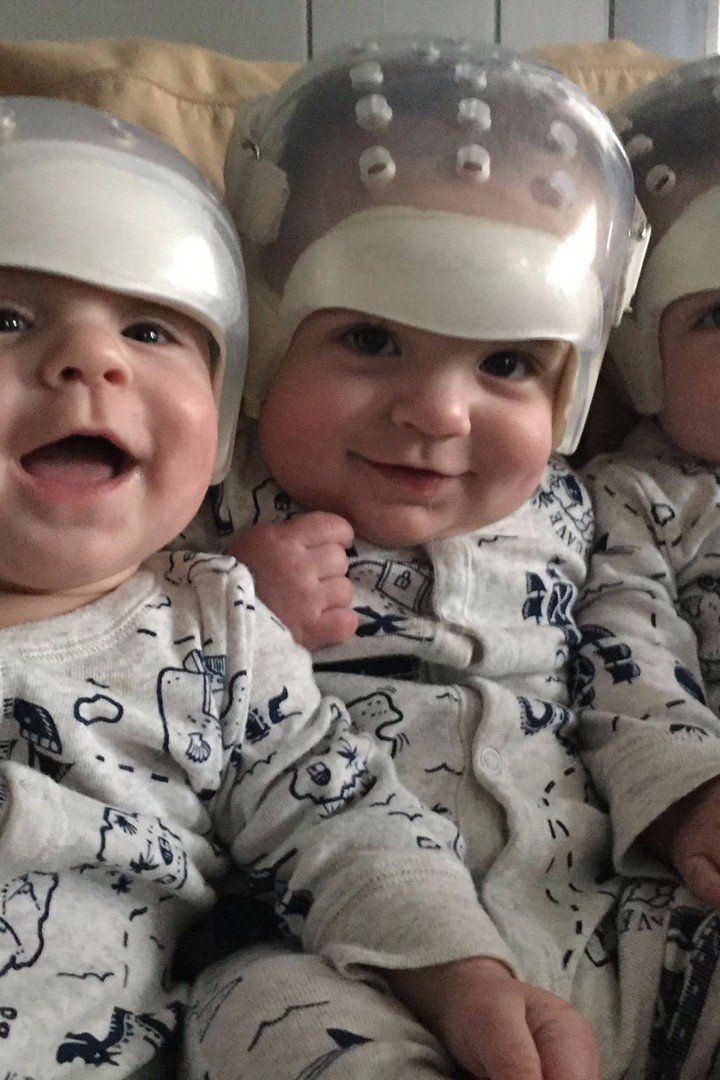 Low-impact exercises are a great way to stay in shape and maintain your health throughout pregnancy. Some low-impact exercises to try during a multiple pregnancy can include:
Low-impact exercises are a great way to stay in shape and maintain your health throughout pregnancy. Some low-impact exercises to try during a multiple pregnancy can include:
- Swimming.
- Walking.
- Prenatal yoga.
Even though activity is wonderful during pregnancy, you should talk to your healthcare provider about the best activities for you. Some more strenuous activities might not be a good idea during a multiple pregnancy, including:
- Jogging.
- Aerobics that involve jumping.
It’s also important to remember that your exercise routine might need to change over time if you experience any complications.
All About Twins, Triplets, and More
Reviewed by Renee A. Alli, MD on May 14, 2021
If two or more babies grow in a woman’s uterus at the same time, they’re known as “multiples.” Sometimes they look exactly alike -- identical -- and sometimes they don’t look any more alike than typical siblings -- fraternal.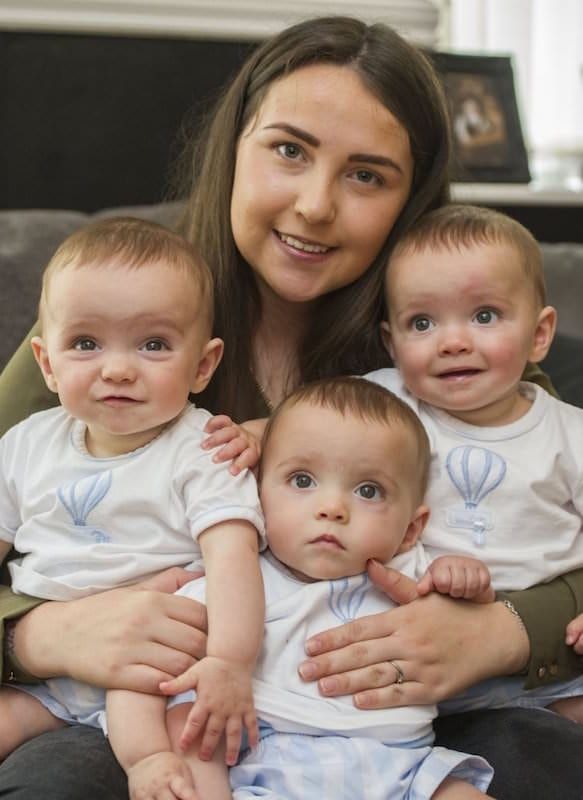 They happen in different ways.
They happen in different ways.
A fertilized egg is made with one egg and one sperm. If it splits in two, which happens sometimes, you have identical twins. If one of those eggs separates again, you’ll have identical triplets, and so on. All the babies start with the same gene set: They’re either all boys or all girls, and they’ll look alike. Identical multiples happen in three or four of every 1,000 live births.
Sometimes, more than one egg comes out of a woman’s ovary in a single month. If each one is fertilized by different sperm, fraternal multiples happen. Unlike identicals, the genes of fraternals are as different as any other sibling with the same parents. These kind of multiples are born more often than identicals.
If a woman has two or more eggs during their fertility window, it’s possible that each one could be fertilized at different times -- even by different men. So it’s possible for multiples to be born with different fathers.
Parents of twins often say their children have a special language they use only with each other.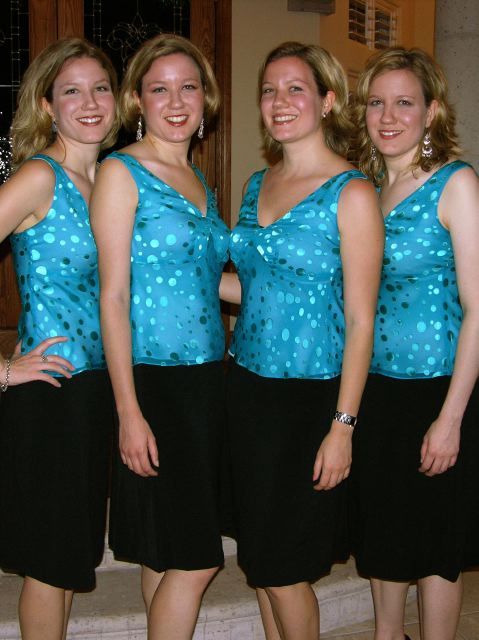 Apparently, the communication starts early. One study found that by the 14th week of pregnancy, twins make intentional movements toward each other. More research is needed to see if this holds true for other multiples -- triplets, quadruplets, etc.
Apparently, the communication starts early. One study found that by the 14th week of pregnancy, twins make intentional movements toward each other. More research is needed to see if this holds true for other multiples -- triplets, quadruplets, etc.
A cesarean section, also called a C-section, is a way of giving birth through a cut in the abdomen. It’s usually done to protect the health of the mother and their babies. Women are more likely to have one if they have twins, and most triplets and higher-number multiples are born this way.
Why are some women more likely to have multiples? A few things can affect the odds. For example, if a woman hasn't been able to get pregnant, their doctor may recommend medication to make their ovaries release more eggs. This can boost the chances of them getting pregnant -- and the chances of them having fraternal multiples .
This is when a doctor takes eggs from a woman’s ovaries, usually after they've taken fertility drugs. The eggs are fertilized with sperm outside the womb, and then put back inside their uterus. Because this can be tricky and unpredictable, two or more embryos are often put back to make it more likely that at least one will grow and develop. Sometimes two or more do, and the parents have fraternal multiples.
Because this can be tricky and unpredictable, two or more embryos are often put back to make it more likely that at least one will grow and develop. Sometimes two or more do, and the parents have fraternal multiples.
More than 35% of American women who have babies are over 30, and that’s thanks in part to fertility treatment. Even without a doctor’s help, women over 30 are more likely to release two or more eggs at once, possibly because their bodies make more of an ovary-stimulating hormone to give their ovaries a boost. And African-American women are most likely to have twins, while Asian women are least likely.
Moms who have multiples are an average of 1 inch taller than other moms. A hormone that taller women have more of -- insulin-like growth factor, or IGF -- may be the reason. It may be that IGF makes a woman’s ovaries release more eggs, but more research is needed to know for sure.
One study found that women who drank more milk or milk products had twins more often.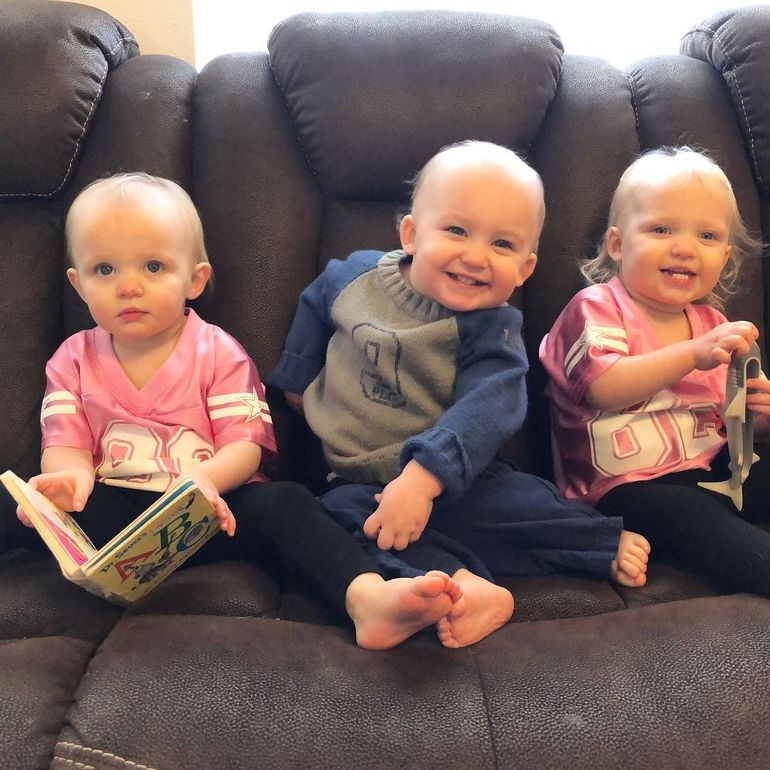 Some scientists think these lead your body to make more IGF, which can lead to more eggs in a monthly cycle.
Some scientists think these lead your body to make more IGF, which can lead to more eggs in a monthly cycle.
A woman with a mother or sister who has fraternal twins is about twice as likely to have them as well. And women who have a higher body mass index (BMI) also have a higher rate of fraternal multiples. BMI is a measure of your body fat -- higher-than-normal BMI is generally bad for your health.
This is the most common complication with multiples. A “full-term” baby is delivered around 39 or 40 weeks, but most multiples are born “preterm,” or under 37 weeks. They’re 6 times more likely to be preterm than a single baby. Babies born before 32 weeks are more likely to have long-term health issues like hearing loss, vision problems, and possibly brain damage.
This causes high blood pressure and other problems. It can happen in any pregnancy, but it’s more common with multiples. A rise in blood pressure is usually the first sign, but women who have it also may have headaches, vision problems, nausea, and vomiting. It can be dangerous to the mother and babies, but there’s medication to lower blood pressure and manage other symptoms. The condition goes away after the mother gives birth.
It can be dangerous to the mother and babies, but there’s medication to lower blood pressure and manage other symptoms. The condition goes away after the mother gives birth.
Because multiples have a higher chance of problems and earlier deliveries than single babies, doctors like to keep a closer eye on them. They track the babies' growth and development, monitor the mother’s health, and watch for signs of early labor. They also might do ultrasounds -- a way of looking at the babies in the womb -- and other tests to make sure everything’s going OK.
IMAGES PROVIDED BY:
- Thinkstock Photos
- Thinkstock Photos
- Thinkstock Photos
- Getty Images
- Thinkstock Photos
- Thinkstock Photos
- Thinkstock Photos
- Getty Images
- Thinkstock Photos
- Getty Images
- Thinkstock Photos
- Thinkstock Photos
- Getty Images
- Thinkstock Photos
- Thinkstock Photos
Department of Health & Human Services, Victoria, Australia: “Twins -- identical and fraternal.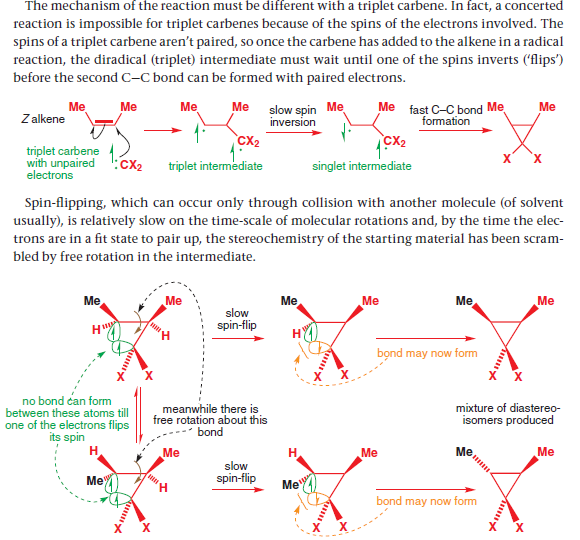 ”
”
March of Dimes: “Being pregnant with twins, triplets and other multiples.”
Mayo Clinic: “Twin pregnancy: What multiples mean for mom, “Premature Birth,” “Preeclampsia.”
National Institutes of Health: “Superfecundation in etiology of twin pregnancy.”
Nature: “A diet of milk could bring twins.”
PLOS: “Wired to Be Social: The Ontogeny of Human Interaction.”
Science Daily: “Taller Women Are More Likely To Have Twins, Obstetrician's Study Confirms.”
© 2021 WebMD, LLC. All rights reserved. View privacy policy and trust info
Recommendations for solving C5 tasks (molecular biology)
Recommendations prepared by biology methodologists of the GMC DOgM Milovzorova A.M. and Kulyagina G.P. based on the materials of the manuals recommended by the FIPI for preparing for the exam in biology.
Task 1.
Determine the chromosome set in the cells of the outgrowth and cells of the adult fern plant.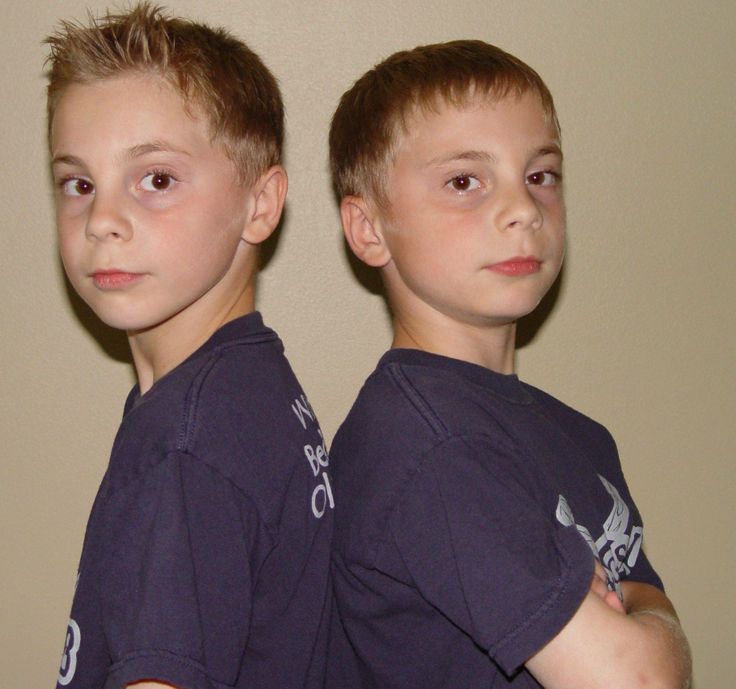 As a result of what type of division, and from which cells is this chromosome set formed?
As a result of what type of division, and from which cells is this chromosome set formed?
1) The chromosome set in the cells of the outgrowth is haploid (n).
2) The chromosome set in the cells of an adult plant is diploid (2n).
3) A seedling is formed from a haploid spore that divides by MITOSIS; an adult plant is formed from a diploid zygote that divides by mitosis.
Task 2.
Determine the chromosome set in the cells of an adult plant and spores of cuckoo flax. As a result of what type of division, and from which cells is this chromosome set formed?
1) The chromosome set in the cells of an adult plant is haploid (n).
2) Chromosomal set in spores is haploid (n).
3) An adult plant from a haploid spore that divides by MITOSIS to form a pre-embryo (protonema) and then an adult plant.
4) Spore is formed as a result of MEIOSIS from spore mother cells in sporangia.
Task 3.
What chromosome set is typical for gametes and spores of the cuckoo flax moss plant? Explain from which cells and as a result of what division they are formed.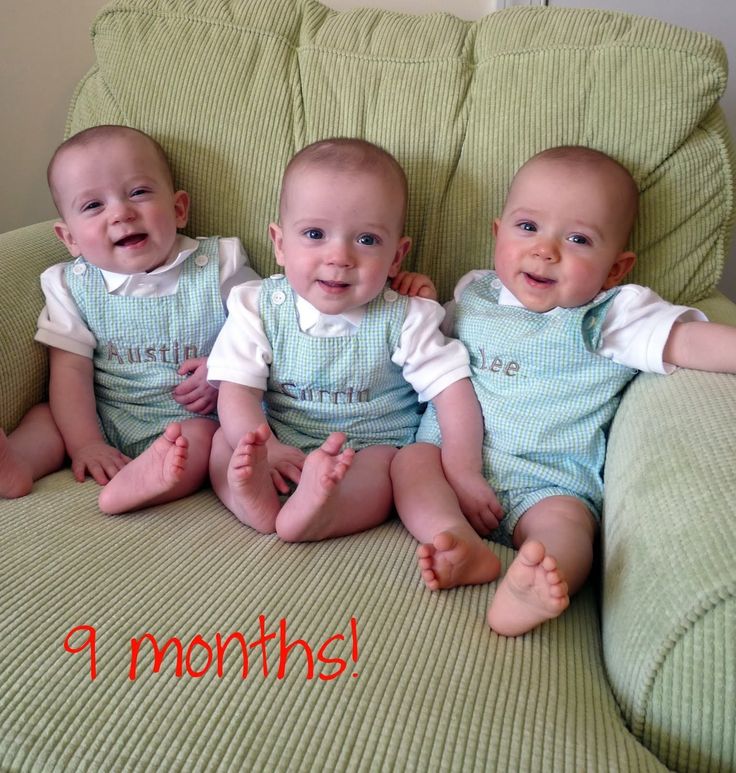
Task 4.
Determine the chromosome set of cells of the eight-nuclear embryo sac and cells of the integumentary tissue of a flowering plant. As a result of what type of division, and from what cells is this chromosome set formed?
1) The chromosome set of cells of the eight-nuclear embryo sac of a flowering plant is haploid (n).
2) The chromosome set of cells of the integumentary tissue of a flowering plant is diploid (2n).
3) The cells of the eight-nuclear embryo sac are formed from a haploid megaspore that divides THREE times by mitosis.
Integumentary tissue cells are formed from the educational tissue, its cells are diploid (2n) and divide by MITOSIS.
Task 5.
Determine the chromosome set of cells of the main tissue and sperm of a flowering plant. As a result, what type of division, and from what cells is this chromosome set formed?
1) The chromosome set of cells of the main tissue is diploid (2n).
2) The chromosome set of sperm is haploid (n).
3) The cells of the main tissue are formed from the educational tissue, the diploid cells of which divide by mitosis.
Sperm are formed from a haploid generative cell that divides by MITOSIS.
Task 6.
What set of chromosomes is contained in sperm and in the cell of the main tissue of the cucumber leaf? Explain from what initial cells and as a result of what division spermatozoa and cells of the main tissue are formed.
Task 7.
A polypeptide consists of 20 amino acids. Determine the number of nucleotides in the gene region that encodes the primary structure of this polypeptide, the number of codons on the mRNA corresponding to these amino acids, the number of tRNA molecules involved in the biosynthesis of the polypeptide. Explain the answer.
1) The genetic code is triplet, so the DNA gene region encoding 20 amino acids contains 20x3=60 nucleotides.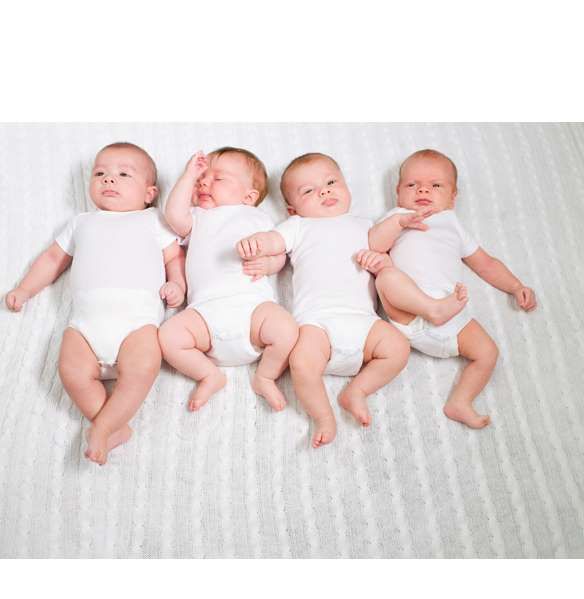
2) An mRNA molecule contains 20 codons - triplets.
3) Biosynthesis of this polypeptide requires 20 tRNA molecules.
Task 8.
A fragment of a DNA chain contains 15 nucleotides. Determine the number of nucleotides in an mRNA molecule, the number of types of tRNA molecules involved in protein synthesis, the number of amino acid residues in a protein molecule.
Task 9.
It is known that a protein molecule consisting of 8 amino acids has been synthesized. Determine how many types of tRNA were involved in the synthesis, the number of nucleotides per mRNA, the number of nucleotides per double strand of DNA.
Task 10.
The total mass of all DNA molecules in 46 chromosomes of one human somatic cell is about 6x10 - 9 mg. Determine the mass of all DNA molecules in the spermatozoon and somatic cell before the start of mitotic division and after its completion.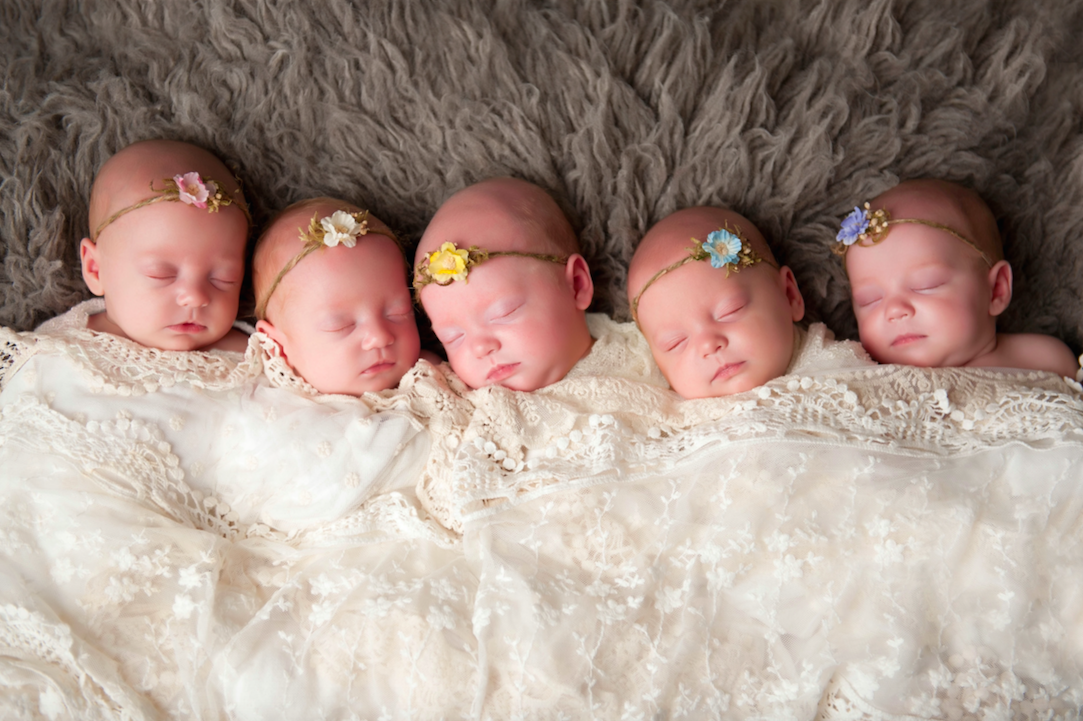 Explain the answer.
Explain the answer.
1) Before the start of division in the original cell, the amount of DNA doubles and its mass is 2x6x10 - 9 = 12x10 - 9 mg.
2) After the end of division in the somatic cell, the amount of DNA remains the same as in the original cell - 6x10 - 9 mg.
3) There are 23 chromosomes in germ cells, i.e. the amount of DNA is two times less than in somatic and is 6x10 - 9 : 2 = 3x10 - 9 mg.
Task 11.
What chromosome set is typical for the embryo and endosperm cells of the seed, barley leaves. Explain the result in each case.
1) In the cells of the seed germ, a set of 2n, since the embryo develops from the zygote.
2) In the cells of the endosperm of the seed, the set of chromosomes is 3n, since the endosperm is formed by the fusion of the nuclei of the central cell of the ovule (2n) and one sperm (n).
3) Barley leaf cells have a set of 2n chromosomes, like all somatic cells.
Task 12.
An mRNA molecule fragment contains 12 nucleotides. Determine how many triplets are included in the template DNA strand. Determine what percentage of the DNA molecule are cytosine and guanine nucleotides, if it is known that thymine is 31%.
1) DNA triplets - 4 (12:3).
2) Thymine is complementary to Adenine - 31%.
3) Cytosine and Guanine make up 19% each (100 - 62 = 38:2 = 19).
Task 13.
There are 110 nucleotides with thymine in the DNA molecule, which is 10% of their total number. Determine how many nucleotides with Adenine (A), Guanine (G), Cytosine (C) are contained in a DNA molecule and explain the result.
Task 14.
An mRNA molecule contains 24 nucleotides. Determine the total number of nucleotides on a fragment of a double-stranded DNA molecule, the number of triplets on the template DNA strand, and the number of nucleotides in the anticodons of all tRNAs.
1) Double strand of DNA contains 48 nucleotides (24x2=48).
2) There are 8 triplets on the DNA template strand (48:2=24 24:3=8).
3) tRNA anticodons contain 24 nucleotides (8x3=24).
Task 15.
42 tRNA molecules participated in the translation process. Determine the number of amino acids that make up the synthesized protein, as well as the number of triplets and nucleotides in the gene that codes for this protein.
1) One tRNA carries one amino acid. 42 tRNAs - 42 amino acids. The synthesized protein consists of 42 amino acids.
2) One amino acid is encoded by one triplet of nucleotides. 42 amino acids encode 42 triplets.
3) Each triplet contains three nucleotides. The gene encoding a protein of 42 amino acids includes 42x3=126 nucleotides.
Task 16.
A section of one of the two strands of the DNA molecule contains 300 nucleotides with adenine (A). 100 nucleotides with thymine (T), 150 nucleotides with guanine (G) and 200 nucleotides with cytosine (C). How many nucleotides with A, T, G and C are contained in a double-stranded DNA molecule? How many amino acids should the protein encoded by this section of the DNA molecule contain? Explain the answer.
How many nucleotides with A, T, G and C are contained in a double-stranded DNA molecule? How many amino acids should the protein encoded by this section of the DNA molecule contain? Explain the answer.
1) According to the principle of complementarity, the second strand of DNA contains nucleotides: A - 100, T - 300, G - 200, C -150.
2) Two DNA chains contain nucleotides: A - 400, T - 400, D - 350, C - 350.
3) One of the two chains carries information about the structure of the protein, the number of nucleotides in one DNA chain = 300+ 100+150+200= 750, one amino acid encodes a triplet of nucleotides, so the protein should contain 750:3 = 250 amino acids.
Task 17.
An mRNA molecule contains 42 nucleotides. Determine the total number of nucleotides in a fragment of a double-stranded DNA molecule, the number of triplets on the template DNA strand, and the number of nucleotides in the anticodons of all tRNA molecules.
1) A double-stranded DNA chain contains 84 nucleotides.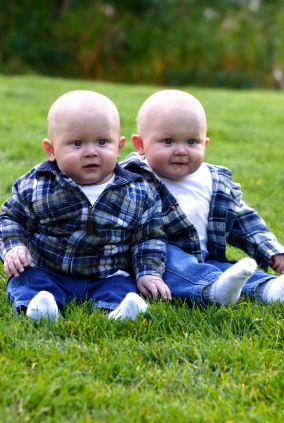
2) DNA template strand contains 14 triplets (42:3).
3) tRNA anticodons contain 42 nucleotides.
Task 18.
11 types of tRNA are involved in protein synthesis. Determine how many nucleotides the template chain of a DNA molecule contains. Determine what percentage of the DNA molecule are thymine, cytosine and guanine nucleotides, if adenine contains 18%.
1) A DNA chain contains 33 nucleotides.
2) Thymine is complementary to Adenine and makes up 18%.
3) Cytosine and Guanine make up 32% each (100 - 36 = 64:2 = 32).
Task 19.
A fragment of a protein molecule consists of 30 different amino acids. Determine how many types of tRNA were involved in the synthesis of a fragment of a protein molecule. How many nucleotides are contained in mRNA and one strand of a DNA molecule involved in biosynthesis?
Biosynthesis involves: 1) 30 tRNA molecules.
2) 90 nucleotides in mRNA.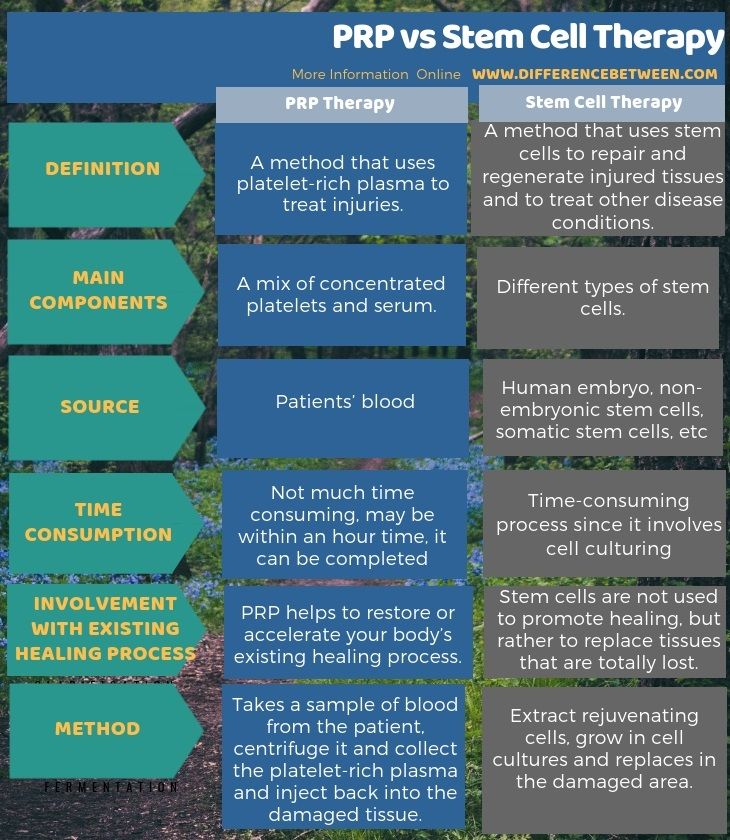
3) 90 nucleotides in one DNA strand.
90,000, Genetik Marshall NIrenberg, who received the Nobel Prize for the decoding of the genetic code
Science
At the age of 82, the famous American geneticist Marshall Nirenberg, winner of the Nobel Prize in Medicine and Physiology, died in New York 1968 "for deciphering the genetic code and its role in protein synthesis."
Today, genetics is practiced by thousands of people around the world, and it is supposed to explain everything from the evolution of species and causes of cancer to plant resistance to parasites and human behavior. And we all almost do not remember how, in fact, she is young. And in vain - now her fathers are leaving us, those whose discoveries are firmly established in biology textbooks for high schools.
Universal physicist
Vitaly Ginzburg, the great Russian physicist and Nobel Prize winner in 2003, died at the age of 94. ..
..
09 November 11:52
One of these fathers was Marshall Nirenberg, who died on January 15, 2010 in New York from cancer.
He was born on April 10, 1927 in Brooklyn in a family of immigrants from the Russian Empire. When he was 10 years old, the family moved to Florida, where the child's early interest in biology was manifested. Result: in 1948 he received a Bachelor of Science degree, at 1952 - Master's degree in zoology from the University of Florida. In 1957 he received his Ph.D. from the Department of Biochemistry at the University of Michigan and is sent as a postdoc to the National Institutes of Health. From that moment on, he began to conduct independent research, which led to important discoveries and international recognition.
In one of his interviews, he recalled those times with great warmth:
“Science used to be completely different, much freer.
The discovery lost its Russian trace
The 2009 Nobel Prize in Medicine and Physiology was awarded to three American scientists for the discovery.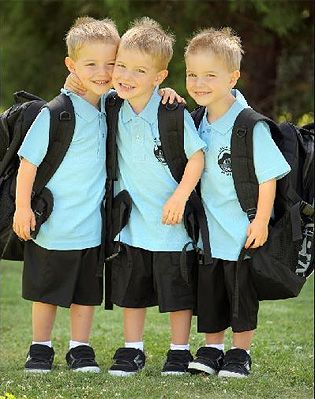 ..
..
October 06 17:28
Now she is very competitive. Young scientists compete for positions, more mature ones for funding. This is a very big pressure and attitude: you have to produce, produce and produce. But in science, things are not so simple. When you start a new topic, you don't know if you've chosen the right direction. And nothing can be done - you just need to take a low start and run. Sometimes it helps, sometimes it doesn't.
40 years ago everything was different. When I got my first position, Gordon Tompkins asked me to work with his group as an independent researcher. I agreed and completely changed the field of work! I became interested in the synthesis of proteins and nucleic acids - what is now called molecular biology. At first I worked alone, but when the first results appeared, interested people began to quit their work and join me. I don't think that's possible in today's times."
And then - already 50 years ago - the freedom of young scientists of the Nirenberg team gave impressive results.
In the early 1960s, they conducted a series of experiments that allowed them to decipher the genetic code.
“This is no longer my world”
The French sociologist, ethnographer, philosopher and culturologist Claude Lévi-Strauss died at the age of one hundred...
06 November 13:25
First, they synthesized polyuracil, an RNA molecule that contains only uracil (RNA, unlike DNA, contains uracil instead of thymine). The researchers then placed polyuracil in a cell-free experimental system formed by carefully grinding bacteria to produce a mixture of amino acids, RNA, ribosomes, essential enzymes, and other substances. Polyuracil RNA directed the synthesis of a protein molecule consisting of a chain of molecules of the amino acid phenylalanine. Therefore, the code for phenylalanine was the uracil-uracil-uracil triplet (because uracil is the only nitrogenous base in polyuracil), or UUU.
Since DNA contains 4 nitrogenous bases, and the genetic code is formed from triplets of nitrogenous bases, there are 64 (4x4x4) possible triplet combinations for DNA.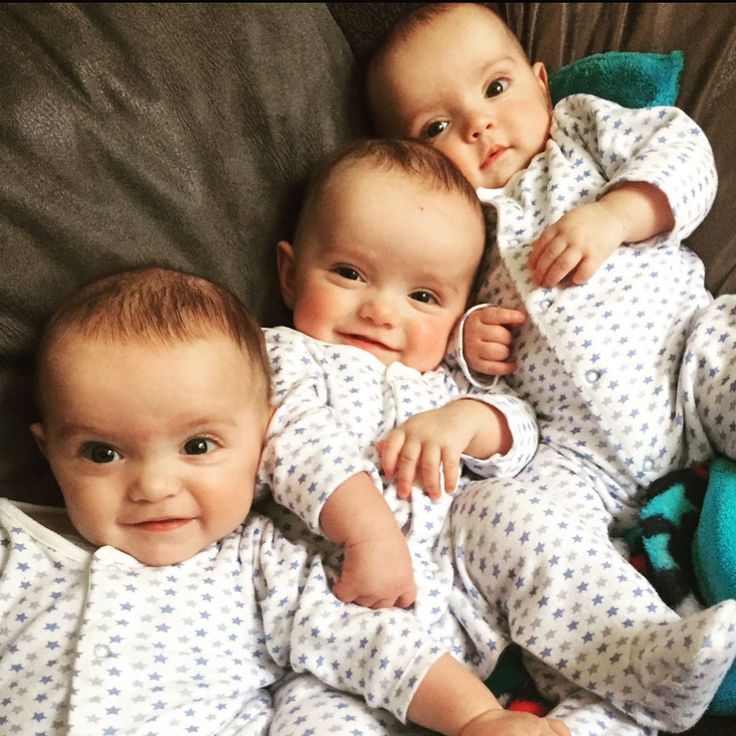 Nirenberg and his colleagues were able to synthesize all possible triplet sequences by repeating cell-free experiments with each of them and in this way discovering the codes for nitrogenous base triplets for all 20 amino acids. Some of the amino acids are coded for by more than one triplet, and some triplets are known as "nonsense" because they do not code for any amino acid. Nirenberg found that "meaningless triplets," like a dot in a sentence, can signal the end of a cell's biosynthetic process. He and his colleagues later carried out additional experiments to determine the sequence of nitrogenous bases in each triplet.
Nirenberg and his colleagues were able to synthesize all possible triplet sequences by repeating cell-free experiments with each of them and in this way discovering the codes for nitrogenous base triplets for all 20 amino acids. Some of the amino acids are coded for by more than one triplet, and some triplets are known as "nonsense" because they do not code for any amino acid. Nirenberg found that "meaningless triplets," like a dot in a sentence, can signal the end of a cell's biosynthetic process. He and his colleagues later carried out additional experiments to determine the sequence of nitrogenous bases in each triplet.
"Nobel" hit by the scandal virus
The 2008 Nobel Prize in Medicine went to three virologists - a German, a Frenchman and...
October 06 17:27
In 1968, Nirenberg, along with Robert Holley and Har Gobind Korana, received the Nobel Prize "for deciphering the genetic code and its function in protein synthesis."
Nirenberg's numerous awards include the National Science Society's National Medal of Science (1965), the Franklin Medal of the Franklin Institute for the Advancement of Engineering (1968), the Priestley Medal of the American Chemical Society (1968) and the Louise Gross-Horwitz Award from Columbia University (1968).
Marshall Nirenberg died on January 15, 2010 from cancer after a long illness.
“I can't say that I always wanted to be a scientist. But I have always been interested in nature, and luck smiled at me when studying it. I think that interest in science is only an evolution of an indestructible interest in the mysteries and mysteries of nature,” he said about himself.
Subscribe to Gazeta.Ru in News, Zen and Telegram.
To report a bug, select the text and press Ctrl+Enter
News
Zen
Telegram
Picture of the day
"That doesn't make sense." Musk is not going to discuss Ukraine with Putin
Musk denied Vice's information about the conversation with Putin before the publication of his "plan" for Ukraine
Reward for a soldier. What medals and orders are awarded to the participants of the special operation in Ukraine
Servicemen of the Russian Armed Forces are awarded medals and orders on the battlefields
I want Russia to have “zero profit”. What Zelensky asked G7
Medvedev called the delivery of extended-range MLRS to Kyiv the fastest way to escalate the conflict
Minister of Energy: Russian strikes damaged about 30% of Ukraine's energy infrastructure
White House: Saudi Arabia aligns its energy policy with Russia
Biden called Putin a "rational" politician
KGB of Belarus: up to 300 military trained in Ukraine to capture the country's regional center
News and materials
RIA Novosti: the Ukrainian army suffers serious losses near the village of Torskoye in the LPR
Head of the FFKKR Gorshkov explains the introduction of a code of ethics in Russian figure skating
An ophthalmologist explained how smoking affects vision
Putin: Russia's actions in OPEC+ are aimed at stabilizing world markets
Maria Mashkova will appear in the Apple TV+ series For All Mankind
Olympic champion Petukhov on Ovechkin's pursuit of Gretzky: the difference in goals is still solid
WAM: UAE President briefed Russian President on Ukraine's position on a number of issues
Liya Akhedzhakova criticized the second cancellation of the play "First Bread" in Sovremennik
Ukraine received four more HIMARS
units from the USA Izvestia: Pugacheva's grandson Presnyakov, Jr.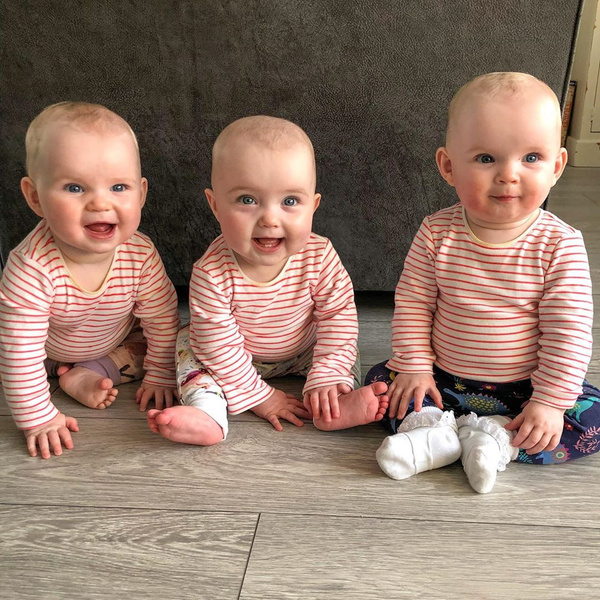 crossed the Russian border on foot
crossed the Russian border on foot
Rospotrebnadzor: in the Russian Federation there are no cases of infection with the subvariant "omicron" - strain "Cerberus"
Manchester City advanced to the Champions League play-offs two rounds before the end of the group stage
The Ministry of Finance of the Russian Federation warned that storing savings in cryptocurrencies is dangerous and involves risks
Kadyrov congratulated the new commander of forces in the NVO zone Surovikin on his birthday
In Washington, DC, activists with a banner interrupted the IMF session on the restructuring of public debt
State Department: Blinken and Vučić Discuss Efforts to Ensure Energy Security in Serbia
Real Madrid snatched a draw from Shakhtar thanks to Rudiger's goal at 90+5 minutes of the game
Mbappe's goal did not help PSG beat Benfica in the Champions League home match
All news
Russian military operation in Ukraine.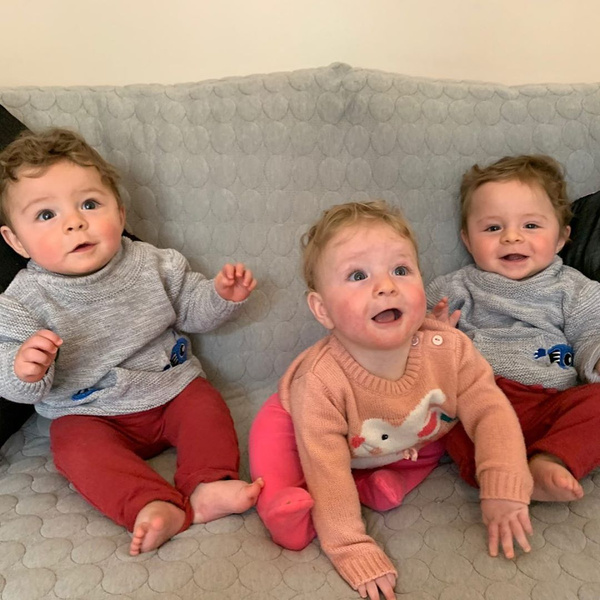 Day 230
Day 230
Online broadcast of the Russian military special operation in Ukraine — Day 230
"All assigned objects are hit." What did the missile strikes on the territory of Ukraine lead to
The Ministry of Defense reported a new massive attack on military and infrastructure facilities of Ukraine
Nissan leaves Russia. What problems await the owners of these cars
Nissan sold the plant in St. Petersburg to the Russian state
"They will order him from Washington." Lavrov did not rule out negotiations with Zelensky
Lavrov said that Putin could meet with Biden at the G20 summit
"Tipping point". The head of the KGB of Belarus expects a change in the situation in the zone of operation in Ukraine
On behalf of Shoigu, the mobilized will be actively trained in the dark
Why a child's personal data is collected and how parents can protect it
Lawyer Partin named cases in which it is possible to refuse the transfer of a child's personal data
Murder, She Wrote star Angela Lansbury dies
Rocket strikes as a "demonstration". An attack of "more serious objects" was predicted in Russia
"The US is enjoying the escalation." The Americans were accused of instigating the conflict in Ukraine
Deputy Foreign Minister Ryabkov promised countermeasures due to US involvement in the conflict in Ukraine

